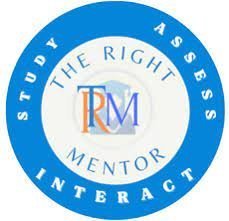Written Examination Syllabus for the post of Trained Graduate Teacher in Residential Educational Institutions Societies.
Paper- 1 | General Studies, General Abilities, & Basic Proficiency In English
General Studies, General Abilities, & Basic Proficiency In English
Section-I: General Studies
Current Affairs – Regional, National & International.
Indian Constitution: Indian Political System; Governance and Public Policy.
Social Exclusion: Rights issues such as Gender, Caste, Tribe, Disability etc.and inclusive policies.
Society Culture, Civilization Heritage, Arts and Literature of India and Telangana.
General Science: India’s Achievements in Science and Technology
Environmental Issues: Disaster Management – Prevention and Mitigation Strategies and Sustainable Development.
Economic and Social Development of India and Telangana.
Socio-economic, Political and Cultural History of Telangana with special emphasis on Telangana Statehood Movement and formation of Telangana state.
Section-II: General Abilities
Analytical Abilities: Logical Reasoning and Data Interpretation.
Moral Values and Professional Ethics in Education.
Teaching Aptitude Section – III: Basic Proficiency in English
i) School Level English Grammar:
Articles; Tense; Noun & Pronouns; Adjectives; Adverbs; Verbs; Modals;
Subject-Verb Agreement; Non-Finites; reported speech; Degrees of
Comparison; Active and Passive Voice; Prepositions; Conjunctions;
Conditionals.
ii) Vocabulary:
Synonyms and Antonyms; Phrasal Verbs; Related Pair of Words; Idioms and Phrases; Proverbs.
iii) Words and Sentences :
Use of Words; Choosing Appropriate words and Words often Confused;
Sentence Arrangement, Completion, Fillers and Improvement;
Transformation of Sentences; Comprehension; Punctuation; Spelling Test; Spotting of Errors.
Paper-2 | Pedgogy Of Physical Sciences
Pedgogy Of Physical Sciences
Syllabus for the post of Trained Graduate Teacher in Residential Educational Institutions Societies.
1) The Nature of Physical Sciences and its Historical Development including the contributions of important Physicists and Chemists given in the school textbooks. Importance of Physical Sciences in School Curriculum.
2) Values, Aims and Objectives of Teaching Physical Sciences.
3) Child Development; Psychology of Teaching and Learning Physical Sciences.
4) Physical Sciences Curriculum: Construction ,Organization and Development.
5) Approaches, Methods and Techniques of Teaching Physical Sciences with special reference to Measurement, units and dimensions; Natural Resources, Our Universe; Natural Phenomenon (Light; Heat; and Sound); Mechanics; Magnetism; Electricity and Electro Magnetism; Modern Physics; Electronics and Communication; Matter; Chemical Reactions; Acids and Bases; Atomic Structure; Periodic Classification of Elements; Chemical Bonding; Carbon and its Compounds; and Metallurgy; Environmental Chemistry.
6) Planning for Effective Instruction in Physical Sciences: Different Plans and Designing Learning Experiences.
7) Learning Resources and Designing Instructional Material in Physical Sciences; Physical Science Labs; Teaching Aids ; Textbooks; ICT in Physical Sciences.
8) Measurement and Evaluation in Physical Sciences; Continuous and Comprehensive Evaluation (CCE); Tools and Techniques of Evaluation; chievement and Diagnostic
Tests.
9) Learning Disabilities/Difficulties and Education of Exceptional/ Disabled Children in Physical Sciences.
10) Physical Sciences and Everyday Life; Non-formal Physical Sciences Education.
Paper-3 | Physics Subject Contents
Subject Contents – Physics
I. Measurements, Units and Dimensions: Need of measurement in daily life. Systems of units. Units and dimentions, Significance of accuracy in measurement. Measuring instruments; Types of errors in measurements – mean absolute relative percentage errors; Fundamental and derived physical quantities. Rules for writing units in SI, derived units SI, Multiples and submultiples of SI units; Dimensional formulae and dimensional equations, dimensionless quantities; principle of homogeneity of dimensions. Application of dimensional analysis.
II. Natural Resources – Air and Water: Composition of air, atmospheric pressure, the consequences of air pollution, ways to reduce air pollution. Winds, cyclones, natural calamities and management of their bad consequences, Composition of water, water cycle, change of phase, Latent Heat. Forms of water in atmosphere, boiling, melting, water pollution and hardness of water. How to handle the shortage of drinking water? Methods of increasing ground water levels.
III. Our Universe: Need to develop the Habit of Night sky observation, How to differentiate constellations with zodiac signs, study of solar system, different laws pertaining to the motion of celestial bodies and ways of measuring the distances in space. Principles of launching of satellites and their applications in day to day life.
IV Natural Phenomenon:
i. Light: Nature of light, Theories of light, Fermat principle, Reflection – its laws. Image formation in plane and spherical mirrors.Rules for Ray diagrams and Formula for spherical
mirrors – focal length and sign convention.Application of mirrors. Properties of Light and Laws; Electro Magnetic spectra.
ii. Heat: Heat as energy- sources of heat, Transmission of heat, Expansion of solids, liquids and gases. Temperature (based on thermal equilibrium), Different Scales of Temperaturemeasurement Different type of Thermometers and their construction. Calorimetry, Applications of Specific heat, Latent heat. Anomalous expansion of water and it significance in nature. Combustion, Calorific value, specific heat of gases.
iii. Sound: Sources of sound. Noise and music. Musical instruments. Propagation of sound. Velocity of sound in different media / substances. Characteristics of sound. Structure of human ear – in Auditory aspect. Reflection of sound, echo, Resonance, Sonar and Doppler effect. Simple Harmonic Motion.
V. Mechanics: Application of Simple Machines in daily life situations. Scalars and Vectors. Free Body Diagram. All types of motion. Different types of Forces. Different types of frictions and effects of friction. Newton’s laws of motion. Momentum. Equations of motion (under gravity and freely falling), projectile. Range. Laws of Floatation. Different laws of fluids. Different types of Energies. Conservation of energy, Work and Power. Work energy theorem. Center of mass. Centre of gravity for regular and irregular objects. Stability and
Equilibrium. Universal law of Gravitation. Relation between ‘g’ and ‘G’.Circular motion, Frame of reference, Kepler’s Laws. Elasticity and Hooke’s Law
VI. Magnetism: Types of Magnets, Identification of Magnetic and Non-magnetic substances, magnetic field, Uniform and non uniform magnetic fields. Magnetic induction. Magnetic lines of force. Terrestrial magnetism–Terrestrial magnetic field. Geo magnetism. Uses of Magnetism; Dip, Declination Magnetic pole strength, Magnetic moment. Inverse square law of magnetism. Magnetic properties of materials and their classification. Domine theory.
VII. Electricity & Electro Magnetism:
Electric charge, field, electric intensity, electric potential, potential difference. Simple Electric Circuits and precautionary measures. House hold circuits. Conductors, Non conductors / Insulators, Coulomb’s inverse square law. Primary and secondary Cells. Ohm’s Law – its limitations.Resistances in series and parallel, Emf of a circuit; Specific resistance.Kirchhoff’s laws. Relation between electric potential and Electric energy, electric Power (wattage), House hold and Industrial power saving. Heating effect of electric current, and Joule’s law. Lighting and Working of lightning conductor, Prevention and control of damage due to lightning. Earthing in electrical appliances. Magnetic field due to currents carrying wire, Ampere’s law, circular loop and Solenoid. Magnetic force on moving charged particle and long straight conductors.Fleming’s left hand rule, Electric motor. Electromagnetic induction – Faraday’s law Electromagnetic flux. Lentz law, Generators and Alternating Currents. Inductance – self, mutual inductance and principles of transformer.
VIII. Modern Physics: Discharge of Electricity through gases, Discharge tube phenomena, Cathode rays, Properties of Cathode rays, Anode rays and their properties; X-rays; Atomic models: JJ Thomson, Rutherford and Bohr’s models. Atomic nucleus and its structure. Atomic models: Mass defect; Radio Activity- Discovery, properties of alpha, beta, and gamma radiations. Applications of alpha, beta, and gamma radiations, Radioactive transformations, alpha, beta decays, Half life period, Isotopes, Isobars, and Isotones. Radioactive transmutation-artificial radioactivity; radio isotopes and their uses in different fields; radioactive series; Chain and controlled nuclear reactions; Fission and fusion of nuclei – atomic bomb and hydrogen bomb.
IX. Electronics and Communications: Semi conductors – intrinsic and extrinsic; band theory; diode, p-n junction characteristics. Transistor – pnp & npn characteristics and uses. Ziner Diode characteristics. Simple electronic circuits, Logic gates – applications. Importance of ICT Block diagram of
computer and its parts Input devices, process and output devices, applications of computers Communication: components of Communication. Basic terminology used in electronic communication system. Band width of transmission medium, propagation, modulation and demodulation.
Paper-3 | Chemistry Subject Contents
Chemistry Subject Contents
X. Matter: States of matter.Elements, Compounds and Mixtures. Methods of separation of mixtures.Chromatography. Behavior of gases; measurable properties of gases; gas laws. Mole concept. Dolton, Avogadro, Berzelius laws.
XI. Chemical Reactions: Physical and chemical changes. Types of Chemical reactions; daily applications.Laboratory preparation of different gases. Physical and Chemical properties various compounds. Chemical calculations. Sources of common salt. Common salt – as a raw material for other chemicals (NaOH, Bleaching powder, baking soda, washing soda, and their uses, Plaster of Paris)
XII. Acids and Bases, Salts: Preparation, properties, Strength and uses of Acids & Bases. Neutralization. Preparation, properties, nature and uses of different Salts.Water of crystallization.Complex, Neutral and double salts.Oxidation and Reduction, Rancidity. Identification of Acids, Bases–Indicators: Natural, Chemical. PHScale – Role of PH in daily life-agriculture, medicine. Classification of salts based on affinity to water Examples of Acidic, Basic, Mixed, Complex, Neutral and double salts. Solutions – Types of solutions; solubility, ionization, Concentration; Oxidation number concept. Balancing of Redox reactions, Calculation of Concentrations. Titration and volumetric analysis. Stoichiometry.
XIII. Atomic Structure: Electromagnetic spectrum, Atomic spectrum, Characteristics of electron, proton and neutron, Rutherford’s model of an atom, nature of electromagnetic radiation, Plank’s quantum mechanics, explanation of photo electric effect, features of atomic spectra, characteristics of hydrogen spectrum, Bohr’s theory of structure of atom, Bohr’s explanation of spectral lines, failure of Bohr’s theory, wave particle nature of electrons, de Broglie’s hypothesis, Heisenberg’s uncertainty principle, important features of the Quantum mechanical model of an atom, Quantum numbers, concept of orbitals, define an atomic orbital in terms of quantum numbers-shapes of s, p and d orbitals, n l x rule, Energies of electronic energy levels (n+l) rule state Auffbau principle, Pauli’s exclusive principle and Hund’s rule of maximum multiplicity, electronic configuration of atom, explanation of stability of half filled and completely filled orbital.
XIV. Periodic Classification of Elements: Need for arrangement of elements in an organized manner. Historical background of classification of elements Doberiener’s Triads, Newland’s law of Octaves. Mendeleev’s Periodic Table (Achievements & Limitations).Mosley periodic table – based on electronic configuration. Characteristics of elements in groups and periods. The concept of grouping elements in accordance to their properties; the periodic law the signification of atomic number and electronic configuration as the basis per periodic classification. Classification of elements into s-block, p-block, d-block, f-block. and their main characteristics. Periodic trends in physical and chemical properties of elements. Study of different Groups of periodic table.
XV. Chemical Bonding: Why do atoms combine? Electronic theory of Valence by Lewis and Kossel Octet Rule, Ionic and Covalent bonds: examples with Lewis Dot formulae Introduction of chemical bonding. Electronic Configuration of Noble gases. sigma, pi bond with examples. Shapes of molecules bond lengths and bond angles in molecules. Hybridization and explanation of H2O, BF3, CH4, NH3 etc. molecules. Hydrogen bonding and types of H-bonds.
XVI. Carbon and its Compounds: Need to study of carbon compounds separately. Classification of Organic compounds Hydro carbons – Alkanes, alkenes, alkynes aromatic and aliphatic compounds with examples. Bonding in Carbon including Hybridization. Allotropes of Carbon. Versatile nature of carbon. Tetravalency, Chains, branches and rings. Catenation, Multiple bonding, Isomerism. Saturated and Unsaturated carbon compounds. Bonding of carbon with other elements. Functional groups in carbon compounds. Homologous series. Chemical properties of carbon compounds Combustion and Oxidation. Addition reactions. Substitution reaction. Important carbon compounds. Nomenclature organic compounds.
Carbohydrates and their classification. Proteins-examples, Oils and fats examples Polythene – Nylon, PVC, Polyvinyl alcohol; Rubber – uses in daily life. Polymers, and other important organic compounds.
XVII. Environmental Chemistry and Metallurgy
Different types of pollutions, acid rains, green chemistry, strategies to control environmental pollution. Occurrence of Metals. Minerals, Ores – Examples. Metallurgy – Processes involved in metallurgy. Extractions of metals – activity series and related metallurgy, flow chart of steps involved in the extraction of metals from ore. Refining metals, Electrolytic refining, Corrosion – Prevention of Corrosion. Alloys and their uses.



